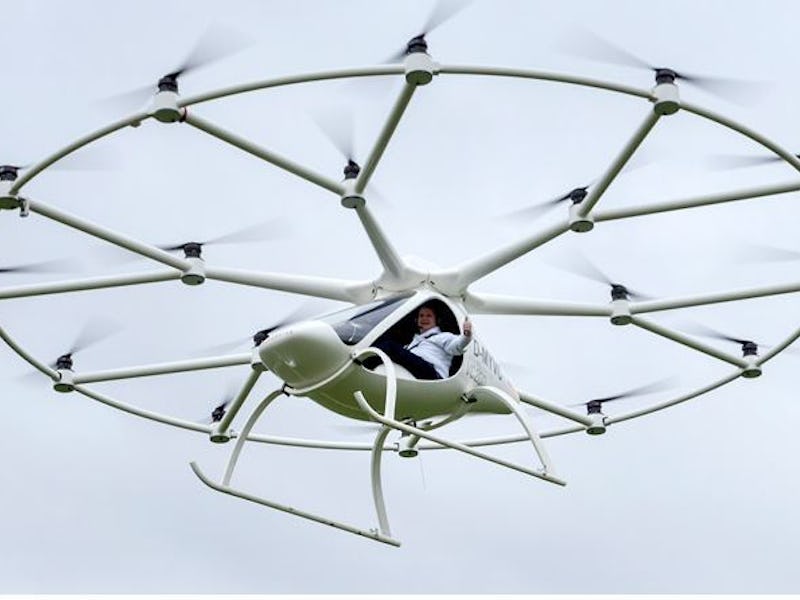Watch the First Manned Flight of the 18-Rotor Helicopter-Drone Volocopter
I think I see some room for more rotors if they try hard enough.

Helicopters are great, but you know what they need? More rotors. At most, helicopters generally have two main rotors, with a smaller tail rotor for stability. But a bunch of Germans decided just three rotors was boring, so they built a flying contraption with 18 different blades.
It’s called the Volocopter, and the German engineers have been working on it since 2010. They’ve done unmanned flights before, operating the craft like a gigantic 18-copter drone, but this time Managing Director Alexander Zosel got behind the controls and flew the thing himself.
One of the biggest problems with helicopters is they’re extremely difficult to fly. They only have one main source of lift, and when that fails, the results are usually disastrous. Multi-rotor flying craft like the popular quadcopter drones are more stable in the air, and more importantly, much easier to handle aerodynamically for inexperienced pilots. The Volocopter team wants their flying craft to finally bridge the skill gap between everyday transportation like cars and human flight. The Volocopter’s controls are incredibly simple — a single joystick with a few buttons — and the giant canopy of independent rotors mean it can hover almost perfectly with very little effort or skill required.
“The Volocopter immediately converted every move I made with the joystick,” Zosel said after his first flight. “The special thing with the Volocopter is that it is actually an aircraft that flies by itself. I can take my hands off the joystick, it stays in the air as if nailed there.”
Look, just because you can, doesn't mean you should.
He said pre-flight checks took him “what felt like 20 seconds,” and after receiving clearance from nearby air traffic control, he was off the ground. While we’re still probably years away from mass-produced personal air travel, the Volocopter’s design is definitely on to something in its ease of use and flight stability. You can watch the full flight below.